|
|
By Sandy, on December 3rd, 2009
Zinnia Elegans is a gorgeous choice for gardens. Zinnia comes in a wide variety of colors, and its large, bright blooms really give a garden a sense of cheer. There are even varieties of zinnia that are as jumbo as three feet in height! Moreover, Zinnia Elegans can easily be grown from seeds. All these factors make Zinnia a very popular flower in gardens.
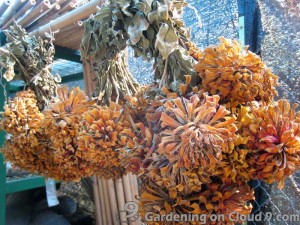
Collecting seeds of Zinnia Elegans is fairly easy. As the blooms fade, air dry the flowers by hanging them upside down.
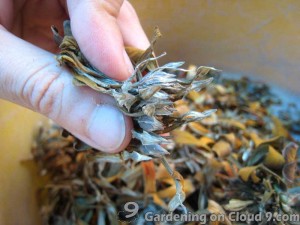 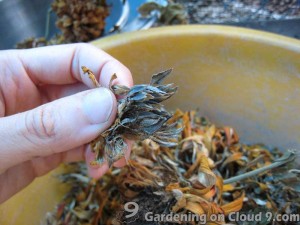
(Left: Zinnia seeds that are not yet ripened Right: ripe Zinnia seeds)
Continue reading Zinnia Elegans: Collecting and Saving Seeds
By Sandy, on October 29th, 2009
There is one thing we should keep in mind when fertilizing our plants – the more isn’t the better. Even though I knew this rule-of-thumb very well (I thought I did…) and practiced what I preached (for most of the time), recently, I’d over-fertilized my African violet – Frosted Denim – and burnt most of its flower buds 🙁
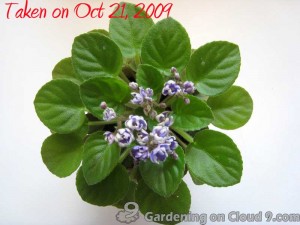 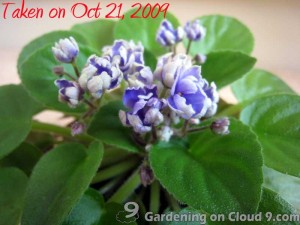
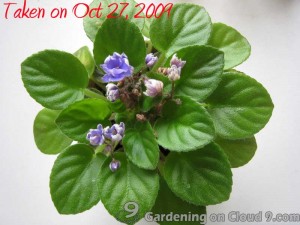 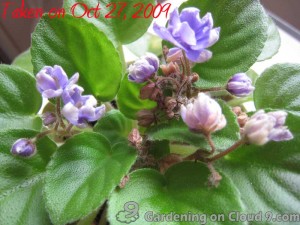
Real Life Example of Bad Fertilizing Practice
A few weeks ago, my African violet – Frosted Denim – was growing beautifully with many flower buds. Since African violets like to be continually fertilized during their blooming period, I diligently fed mine in a regular basis with diluted fertilizer. Continue reading Plant Fertilizer – When More Isn’t Better
By Sandy, on September 3rd, 2009
In the gardening class which I took last weekend, I have learned how to transplant a tree. While I have never thought that transplanting a tree is an easy task, I wouldn’t expect that it could be quite difficult either (especially on a hot summer day). And here, I would like to share some key points of tree transplanting.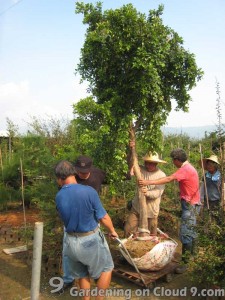
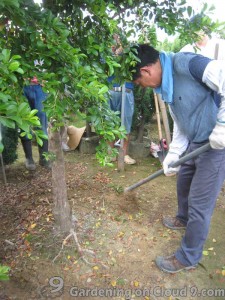
Root pruning can greatly increase the chances of successful transplanting, especially for big trees. We should prune the roots 3 months – 2 years in advance. By severing the roots at or just beyond the drip line of the tree to be moved, the long unbranched roots will be broken. This will prompt growth of new roots near the main trunk, compact the existing root system, and increase the tree’s chances of survival once it is moved. Continue reading Transplanting a Tree
By Sandy, on July 18th, 2009
Recently, I have noticed that my Episcia (aka Flame Violet) often folds up its top pair of leaves when the night comes. The leaves are near the horizontal during the day and close to the vertical at night. And while sometimes the pair of leaves moves just slightly, pointing to the ceiling, there are times the leaves fold up so tightly, sticking against each other with hardly any gap in between.
As ignorant as I may sound, at first, I suspected that this movement of the leaves of my Episcia was due to insufficient sunlight (it had been rainy and gloomy for over a week). So, to keep my Episcia “open” at night, I put my plant under artificial light for around 14 hours per day for several days. However, the artificial light didn’t help at all. The top pair of leaves closes at night regardless of the amount of light there is during the day.
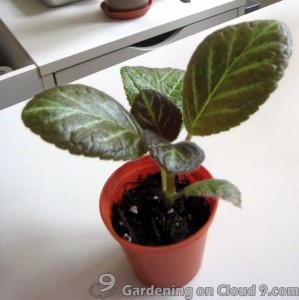 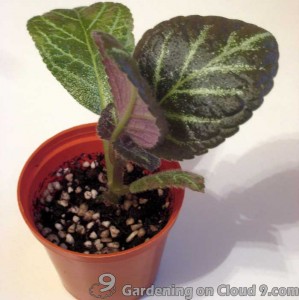
My baby Flame Violet, which I have propagated a while ago, also has its own circadian rhythms.
Continue reading Our Plants Need to Sleep Too!
By Sandy, on July 10th, 2009
I bought my first pot of African violet a few months ago. While the newly acquired African violet is blossoming beautifully, I didn’t aware but only until another gardener pointed out to me that my African violet actually had multiple crowns.
As a curious gardening novice who like to try different things, I decided to take up this challenge and separate the crowns. It has been almost three months since I separated the crowns. Seeing that the separated crowns of my African violets are now growing healthily, I consider this “operation” as a successful one. And here, let me share with you how I did it.
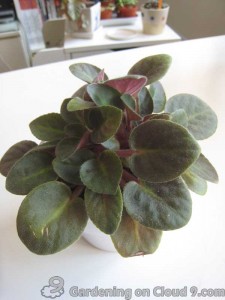
Continue reading African Violet Care – How to Separate Crowns
By Sandy, on June 4th, 2009
 One of my highlights in gardening last month is my discovery of Blotanical. I like it. It’s fun. This social networking site for gardeners makes it much easier for me to meet other gardening bloggers with similar interests and experience. One of my highlights in gardening last month is my discovery of Blotanical. I like it. It’s fun. This social networking site for gardeners makes it much easier for me to meet other gardening bloggers with similar interests and experience.
Blotanical has a tight and friendly community where its members will send messages to newcomers and make them feel welcomed. And there are several neat functions in Blotanical that make surfing this social networking site a fun and helpful experience. Continue reading Blotanical – The Meeting Place for Gardeners
By Sandy, on May 31st, 2009
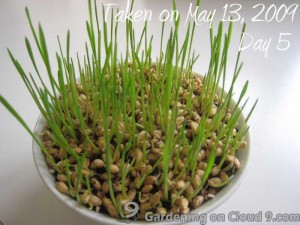 Because of the mold that I have found on my wheatgrass, I have done some research on this subject, and have learned that mold is actually quite a common problem when growing wheatgrass. And while mold doesn’t look very appetizing, it isn’t harmful to our health. As long as we cut the wheatgrass way above the mold that is grown on the soil, and rinse the grass, it is safe to juice them or give them to our pets as snacks (a large number of young grass species, including wheatgrass, can be fed to pet, check Cat Grass or Wheatgrass? for more details). Because of the mold that I have found on my wheatgrass, I have done some research on this subject, and have learned that mold is actually quite a common problem when growing wheatgrass. And while mold doesn’t look very appetizing, it isn’t harmful to our health. As long as we cut the wheatgrass way above the mold that is grown on the soil, and rinse the grass, it is safe to juice them or give them to our pets as snacks (a large number of young grass species, including wheatgrass, can be fed to pet, check Cat Grass or Wheatgrass? for more details).
Continue reading How to Prevent Mold When Growing Grasses in Containers
By Sandy, on May 30th, 2009
Apparently, moving my bowl of catgrass out to the balcony is the right decision to make. After a week of time, the mold near the root of the wheatgrass has more or less gone! 😀 Despite of the improved air circulation, the damp and rainy weather in the past . . . → Read More: Cat Grass Day 21 – Mold Problem Solved
By Sandy, on May 28th, 2009
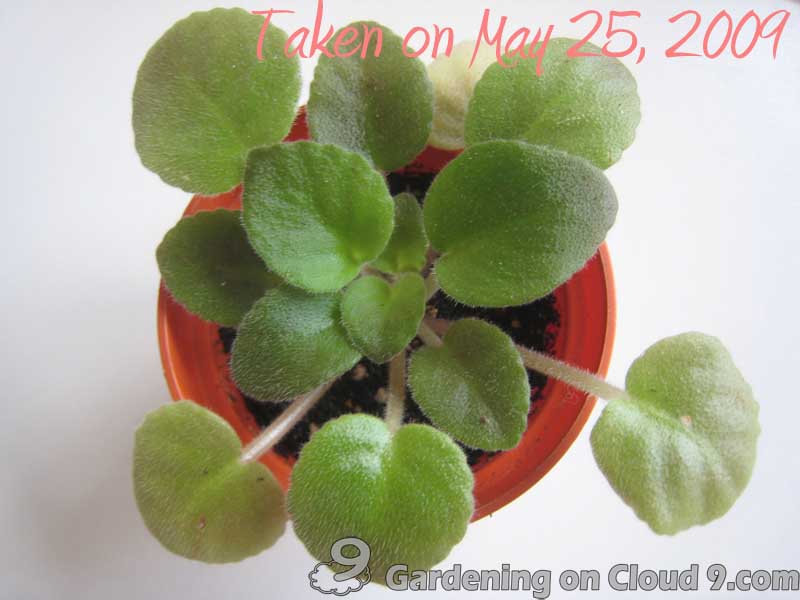
Yes! After repotted my Ness Fantasy Gold to a smaller container for about six weeks, I have finally found a sign of life! My plant is finally growing! This has confirmed that my guess is right. Not only did I overwater my African violet, the ridiculously huge pot probably had caused rotten . . . → Read More: O Yes! Finally Started Growing!
By Sandy, on May 22nd, 2009
 When I was doing some research on the benefits of cat grass for cats and other pets, I got all confused and was starting to wonder if what I am growing now is actually not cat grass. When I was doing some research on the benefits of cat grass for cats and other pets, I got all confused and was starting to wonder if what I am growing now is actually not cat grass.
After more research, I have learned that the term “cat grass” is quite a loose term. In many websites, cat grass actually includes a large number of young grass species. Common oat, flax, barley, and even catnip (Nepeta cataria) which is not even a grass at all, are called cat grass in many websites.
Continue reading Cat Grass or Wheatgrass?
|
|












 One of my highlights in gardening last month is my discovery of
One of my highlights in gardening last month is my discovery of 




Recent Comments